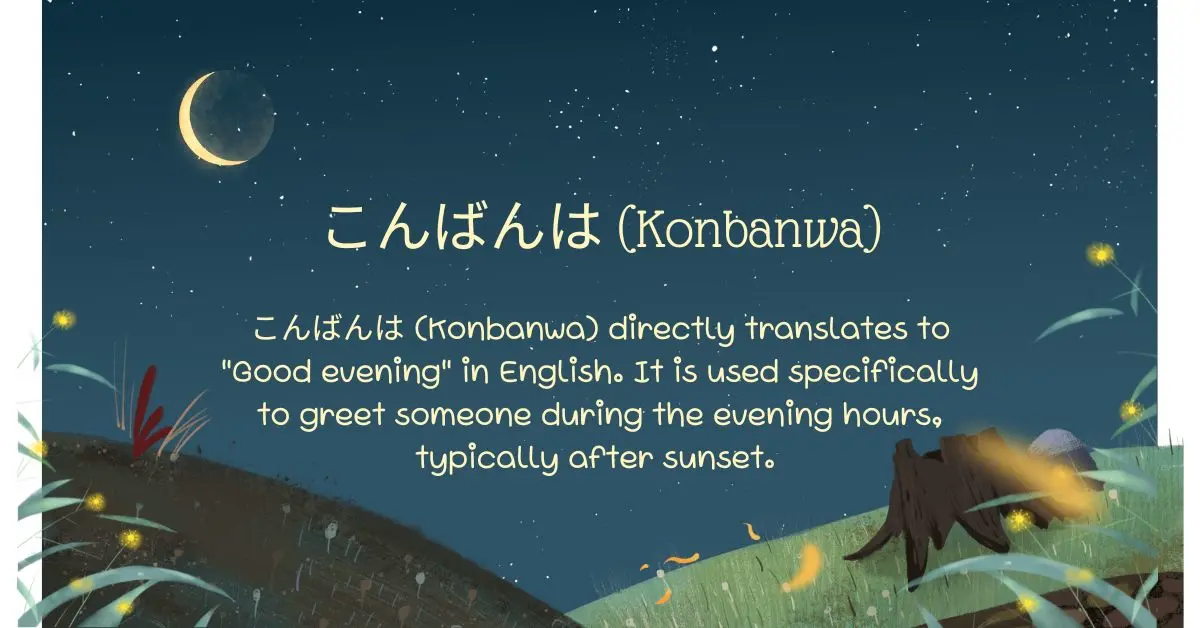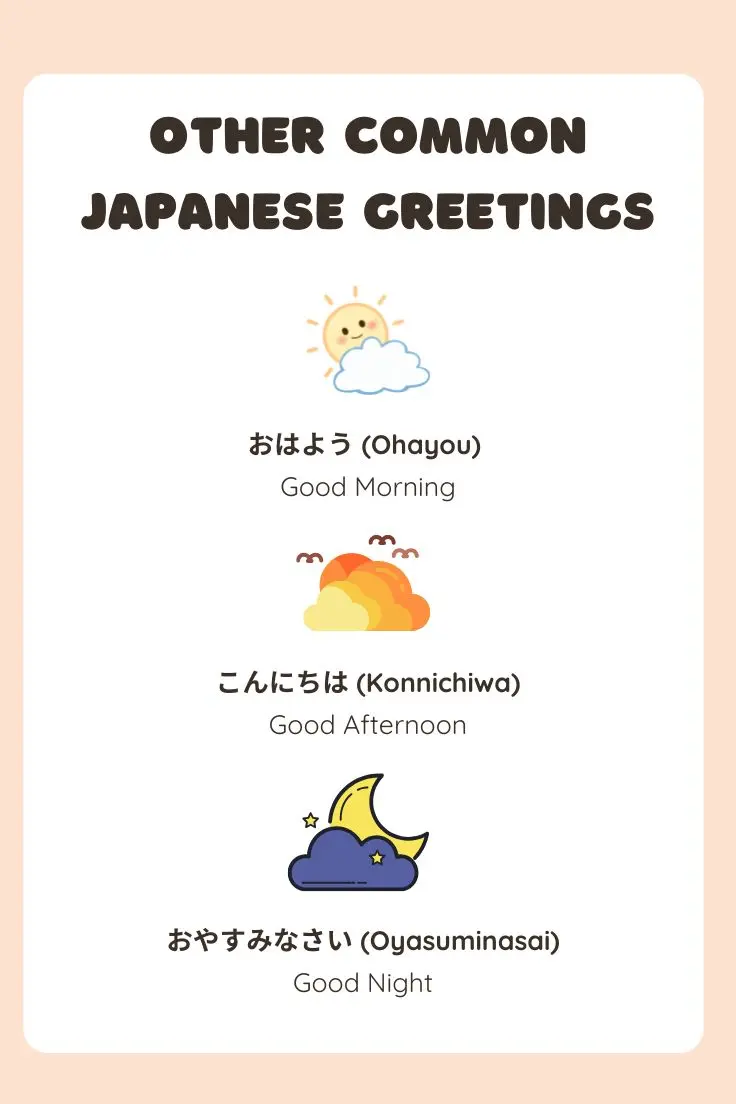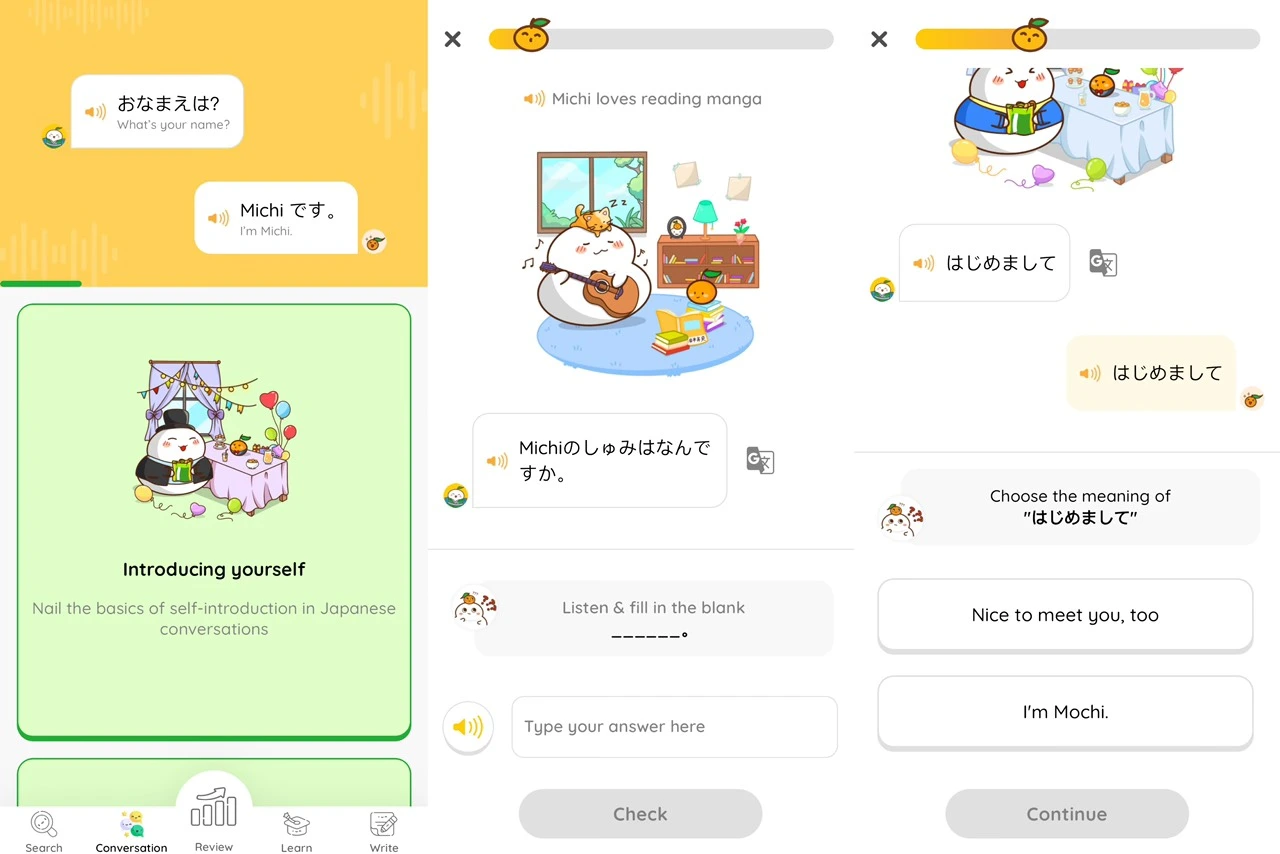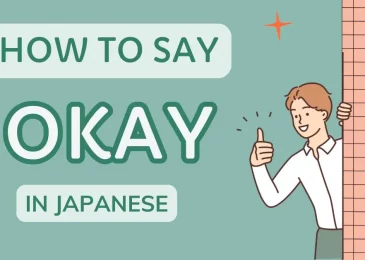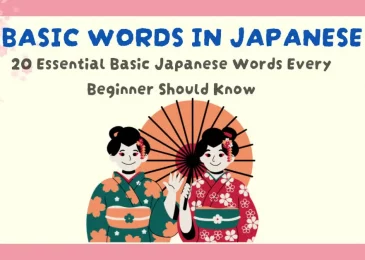Learning Japanese opens the door to a rich and fascinating culture, and one of the foundational aspects of the language is mastering greetings. Unlike English, Japanese greetings change depending on the time of day, the relationship between speakers, and the context of the conversation. One such greeting is “こんばんは” (Konbanwa), which means “Good evening.”
In this comprehensive guide, we will explore the usage, cultural significance, variations, and nuances of this essential Japanese phrase. By the end, you’ll have a thorough understanding of how to use こんばんは confidently in both formal and informal situations.
1. What Does “Good Evening” Mean in Japanese?
The phrase こんばんは (Konbanwa) directly translates to “Good evening” in English. It is used specifically to greet someone during the evening hours, typically after sunset. While in English, “good evening” might carry a slightly formal tone depending on the context, こんばんは is versatile and can be used in both casual and formal settings.
Breaking Down the Phrase
- こん (Kon): A prefix found in other greetings, like こんにちは (Konnichiwa), meaning “hello” or “good afternoon.”
- ばん (Ban): Means “evening” and is derived from the kanji 晩, which refers to the time of day after sunset.
- は (Wa): A particle marking the topic of the sentence. However, in greetings, it functions more as part of the phrase.
Interestingly, while Japanese often relies on kanji, こんばんは is typically written in hiragana. This choice simplifies the greeting for everyday use and emphasizes its conversational nature.
2. When and How to Use こんばんは
In Japanese, the appropriateness of a greeting depends heavily on the time of day. こんばんは is reserved for the evening, but even then, its usage is context-dependent.
Ideal Time frame
The phrase こんばんは is used:
- After sunset, which varies seasonally.
- Typically from around 5 PM or 6 PM onward.
Contexts for Usage
Here are some specific scenarios where こんばんは would be appropriate:
1. Social Gatherings or Events
If you’re attending a party, dinner, or any evening event, greeting the host and other guests with こんばんは is expected. This polite start sets the tone for a pleasant interaction.
2. Professional Environments
In work settings, such as evening meetings, networking events, or after-hours discussions, greeting colleagues or clients with こんばんは demonstrates respect and professionalism.
3. Casual Encounters
Even in informal situations, like greeting a neighbor during an evening walk or starting a conversation with friends in the evening, こんばんは is commonly used.
3. Cultural Significance of Greetings in Japan
Japanese culture places a significant emphasis on greetings. They are not merely pleasantries but serve as vital tools for maintaining social harmony and respect. The use of こんばんは reflects these values, especially in the following ways:
1. Politeness and Respect
Respect is a cornerstone of Japanese society, and proper greetings are a fundamental way to show this respect. Whether you’re addressing a superior, a stranger, or even a friend, using the correct greeting demonstrates mindfulness and cultural sensitivity.
2. Acknowledging Time of Day
In Japanese culture, acknowledging the time of day through greetings helps establish the context of the interaction. By using こんばんは, you are showing awareness of your surroundings and adapting your language accordingly.
3. Fostering Connection
Frequent use of appropriate greetings helps strengthen relationships. Saying こんばんは creates a sense of warmth and camaraderie, even in brief encounters.
4. Other Common Japanese Greetings
To fully appreciate the role of こんばんは, it’s important to understand how it fits into the broader spectrum of Japanese greetings. Each greeting corresponds to a specific time of day or situation.
1. Good Morning: おはよう (Ohayou) / おはようございます (Ohayou Gozaimasu)
- おはよう is informal and used among friends and family.
- おはようございます is the formal version, appropriate in workplaces or when addressing someone of higher status.
- These phrases are used until around 10 AM.
2. Good Afternoon: こんにちは (Konnichiwa)
- This versatile greeting works for late morning to early evening interactions.
- While it is often translated as “hello,” its literal meaning aligns with “good afternoon.”
3. Good Night: おやすみなさい (Oyasuminasai)
- Unlike こんばんは, which is a greeting, おやすみなさい is used when parting ways at night or before going to bed. It carries the connotation of wishing someone a restful night.
The conversation course offered by MochiKanji is the ideal way to learn how to say “good afternoon” in Japanese. You can improve your Japanese speaking abilities by learning phrases like “good afternoon” in Japanese with MochiKanji. With its interactive courses and real-world examples, the application helps you communicate with confidence.
5. How to Use こんばんは in Everyday Scenarios
Let’s dive deeper into practical situations where こんばんは comes in handy.
1. Greeting Someone at an Evening Event
Imagine you’re attending a wedding reception or a company dinner held in the evening. When you arrive, it’s customary to greet the host and other attendees with a polite こんばんは. This simple act helps establish a positive and respectful atmosphere.
2. Meeting a Neighbor
In residential areas, you might encounter neighbors while walking home or taking out the trash. Offering a cheerful こんばんは is a friendly way to acknowledge them.
3. Starting an Evening Phone Call or Video Chat
Whether it’s a business meeting or a personal conversation, opening an evening call with こんばんは sets the right tone and shows awareness of the time.
6. Responses and Follow-Up Phrases
When someone greets you with こんばんは, it’s customary to respond in kind. Here are some examples of how you might reply:
1. Simple Response
- Person A: こんばんは
- Person B: こんばんは
This direct repetition is polite and perfectly acceptable in most situations.
2. Adding a Comment
You can personalize your response by adding a conversational element:
- 今日は寒いですね (Kyou wa samui desu ne) – “It’s cold this evening, isn’t it?”
- お元気ですか? (Ogenki desu ka?) – “How are you?”
These additions help keep the conversation flowing and make the interaction more engaging.
7. Variations and Informal Usage
While こんばんは is the standard evening greeting, there are some variations you might encounter.
1. Casual Shortening: ばんわ (Banwa)
In very informal settings, such as with close friends, こんばんは may be shortened to ばんわ. This is similar to how English speakers might say “Evening” instead of “Good evening.” However, use this sparingly, as it’s inappropriate in formal or professional contexts.
2. Evening Farewell: 良い夜を (Yoi Yoru o)
This phrase translates to “Have a good night” and is sometimes used when parting ways in the evening. While not as common as おやすみなさい, it carries a similar sentiment.
8. Body Language and Non-Verbal Cues
In Japanese culture, communication isn’t limited to words. Body language plays a crucial role, especially when greeting someone. Here are some tips for enhancing your こんばんは:
1. Bowing
Bowing is an integral part of Japanese greetings. When saying こんばんは, a slight bow shows respect and politeness. The depth of the bow depends on the formality of the situation.
2. Eye Contact
While maintaining eye contact is polite, it should be soft and brief. Prolonged eye contact can be perceived as confrontational.
3. Tone of Voice
The tone should be warm and friendly. A cheerful こんばんは conveys positivity, while a more subdued tone might be appropriate in solemn or serious settings.
9. Common Mistakes to Avoid
Even simple greetings like こんばんは can be misused by language learners. Here are some pitfalls to watch out for:
1. Using the Wrong Greeting for the Time of Day
Mixing up greetings—like using こんにちは in the evening—can confuse the listener and signal a lack of attention to cultural norms.
2. Overusing Informal Variants
While ばんわ may be acceptable among peers, it’s best avoided in formal scenarios. Stick to the full こんばんは unless you’re sure the casual tone is appropriate.
10. Practicing こんばんは
Mastering こんばんは requires practice. Here are a few ways to integrate it into your routine:
1. Role-Playing
Practice real-life scenarios with a language partner. Simulate evening encounters to build confidence in using こんばんは naturally.
2. Watching Japanese Media
TV shows, movies, and anime often depict evening interactions. Pay attention to how characters use こんばんは and the contexts in which it appears.
3. Daily Use
If you’re learning Japanese, make a habit of using こんばんは during evening interactions, whether in person or online.
Conclusion
Understanding how to say “good evening” in Japanese –こんばんは – is an essential step in learning the language and embracing its cultural nuances. It’s a versatile greeting that reflects respect, awareness, and a commitment to fostering positive relationships. By using こんばんは appropriately, you can leave a lasting impression, whether you’re in Japan for travel, business, or personal connections.
So the next time the sun sets and you find yourself in an evening conversation, confidently

